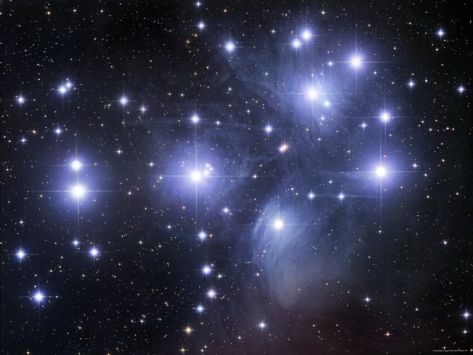Are dimensional portals real? Taking a closer look at the Wormhole Theory

Have you ever let your mind wander through the million possibilities of what could be “out there”? Stargazed and questioned the universe’s purpose, or fantasized about portals leading to universes yet to be discovered? Well, you are not the only one. Since the dawn of consciousness, humans have tried to make sense of the universe’s mysteries. It’s in 1916, thanks to physicist Ludwig Flamm, that the idea of a dimensional portal became conceivable. According to his theory, we could travel through space by a tunnel linking two separate points of space-time. We call it a wormhole. Out of all the scientific theories of the last century, none has left as profound an impact on pop-culture as this one has. Whether you see a wormhole in Interstellar or in the brand new Marvel movie, wormholes are recurrent scenario enablers in science fiction. But what about real life, are dimensional portals just crazy fantasies or are they grounded in science? Would they be of practical use and what would the consequence of their existence be for humanity?

A Wormhole represented in a Marvel movie
Gravity: the ‘magic’ behind space matter
We’ve just seen that a wormhole is a tunnel, but how can it exist in space, which can hardly be thought of as anything else other than unsolid and infinite nothingness? To answer this question, we first need to understand how space works. Einstein’s General Theory of Relativity states that space-time is made of 4 dimensions including time, and that it can be distorted by mass and energy. This distortion or curvature of spacetime leads to effects at our scale that we call gravity. To understand gravity we need to consider that it doesn’t pull matter as magnetism does, but rather warps spacetime and curves it. From its point of view, the Moon is following a straight line through space, while in reality it’s following the warped path created by Earth’s gravity.

The bigger the mass of an astronomical object, the bigger its gravitational pull. Blackholes are probably the best examples of this space-time property: they have an amazingly dense mass, that can be up to a billion times that of the sun’s. This means that black holes attract all close-by objects, including light. Scientists have been trying to get their head around these disappearances. Where does all this close-by matter go once entering a black hole? Does it disappear forever? Or does it reappear somewhere else? According to the wormhole theory, it exits in another universe.

If a wormhole was a tunnel, black holes would be its doors. To travel through a wormhole, we’d have to enter through a black hole (or one of its variations, a white hole for example) and get out by another.
How is all of this even possible?
Before getting deeper into the subject, let’s keep in mind wormholes are theoretical and exist only in the form of equations, meaning they have never been spotted in real life. In short, wormholes are gravitational tunnels that link two black holes situated in different areas of space-time.

Picking up on what we saw earlier about space-time’s distortion, we can easily illustrate a wormhole’s logic with the classic demonstration of the “sheet of paper”. Let’s consider space-time as a flat sheet of paper. The two points we want to connect are represented as dots. If we bend the paper more and more until it almost folds in two, the distance is reduced to nearly zero. That’s why it wouldn’t take long to go through the tunnel linking to points of space-time that are very far away. Rather than portals, wormholes might be thought of as shortcuts through the universe.
In what ways could wormholes be useful to us?

Given the prediction that our expanding society will likely face resource shortages on Earth within a few decades, the quest for a new habitable planet has intensified. Considering this, traveling through space-time with the help of wormholes emerges as the key to survival: these shortcuts would get us to outer space quicker than any human-made ships. We could send mission teams and technological research ships to other universes, and potentially find a new, habitable planet for humans. This might lead to the discovery of other species and civilizations, which would without a doubt be the most impactful event in the history of humanity.
Time paradoxes and other downsides to wormholes

Time being one of the four dimensions of space-time, wormholes could not only link two places together but also two different instants in time, therefore permitting time travel. This brings the theory’s consequences to another level: many laws of physics could break, leading to serious consequences we can hardly imagine. Science-fiction nerds could easily name some of them: the grandfather paradox, the predestination paradox, the bootstrap paradox, the butterfly effect, and so on. These theorical consequences are fascinating but way too complex to be tackled in this article.
In addition to time travelling paradoxes, we should note that fundamental constants in our theories of physics might be different in other universes, meaning space travelers’ bodies might not survive them.
Why haven’t we space travelled with the help of wormholes yet?

Not only are wormholes theorical constructions that we have never spotted in the universe, but even if we found wormholes, we wouldn’t be able to cross them, for the stupidly simple reason that they don’t stay open naturally. Gravity always pulls matter to it, meaning that wormholes always eventually close up on themselves. In order to be crossable, they should be kept stable, and this would require negative mass. Negative mass, or exotic matter, is sadly even more theoretical than wormholes, and can’t be used to support the theory of space-travelling through wormholes.
Recap
In conclusion, a wormhole is a theoretical tunnel that leads us to other universes and other timelines, that we must enter and exit through a blackhole. It is a product of gravity, which is a curvature of space-time. It would highly facilitate time travel but would probably be responsible for some serious paradoxes.
Sadly, or maybe luckily for us, a wormhole has never been spotted in real life. There’s a certain beauty in this uncertainty. This kind of theory serves as a wellspring of inspiration and a perpetual spark for our imagination, reminding us that the universe holds mysteries beyond our comprehension.
A special thanks to Mr. Arnaud Juttier for his fact-checking.
Bérénice Valli / S7FRC / EEB1 Uccle
Sources
Trinh Xuan Thuan – Le cosmos et le lotus
Stephen Hawking – Brief answers to the big questions
NASA- Official website
PBS Space Time – Youtube Channel Univers Today – Website





Je suis très impressionnée, je savais pas que ces portails fictifs qu’on voit dans les films étaient un vrai sujet scientifique. Cette histoire m’intrigue autant qu’elle me fait peur….
i think this may be my favourite article i’ve ever read. it’s just perfect. it tackles every facet of wormholes and blackholes ; the scientific, the fictional, the pop-cultural aspects… i simply love it!! plus, the images complement it so well and render it all the more grasping and fascinating. i’m in awe.
Fascinating, comprehensive while synthetic at the same time. And food for thought of course! Very well done. Carry on like this!
Fabian